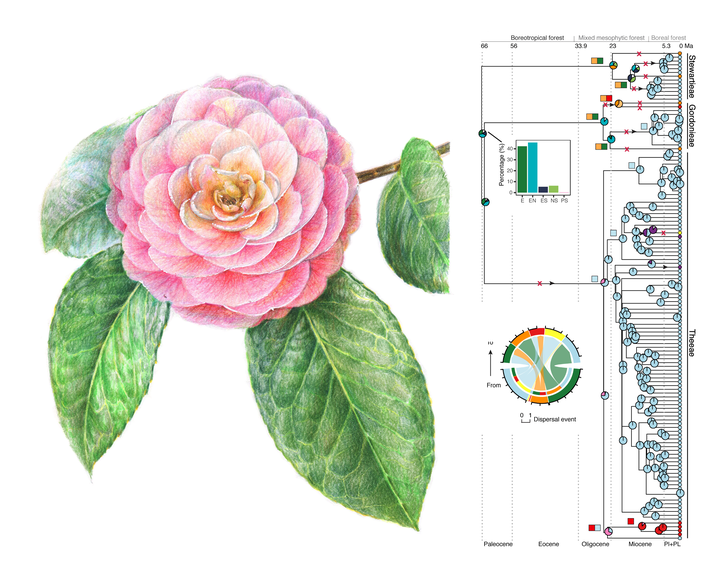Phytogeographic history of the Tea family inferred through high-resolution phylogeny and fossils
 Image credit: Unsplash
Image credit: Unsplash
Abstract
The tea family (Theaceae) has a highly unusual amphi-Pacific disjunct distribution: most extant species in the family are restricted to subtropical evergreen broadleaf forests in East Asia, while a handful of species occur exclusively in the subtropical and tropical Americas. Here we used an approach that integrates the rich fossil evidence of this group with phylogenies in biogeographic analysis to study the processes behind this distribution pattern. We first combined genome-skimming sequencing with existing molecular data to build a robust species-level phylogeny for c.140 Theaceae species, resolving most important unclarified relationships. We then developed an empirical Bayesian method to incorporate distribution evidence from fossil specimens into historical biogeographic analyses and used this method to account for the spatiotemporal history of Theaceae fossils. We compared our method with an alternative Bayesian approach and show that it provides consistent results while significantly reduces computational demands which allows analyses of much larger datasets. Our analyses revealed a circumboreal distribution of the family from the early Cenozoic to the Miocene and inferred repeated expansions and retractions of the modelled distribution in the Northern Hemisphere, suggesting that the current Theaceae distribution could be the remnant of a larger continuous distribution associated with the boreotropical forest that has been hypothesized to occupy most of the northern latitudes in the early Cenozoic. These results contradict with studies that only considered current species distributions and showcase the necessity of integrating fossil and molecular data in phylogeny-based parametric biogeographic models to improve the reliability of inferred biogeographical events.